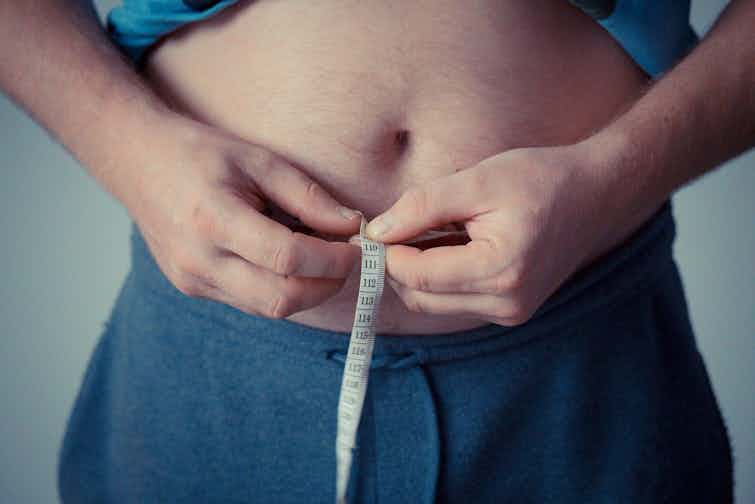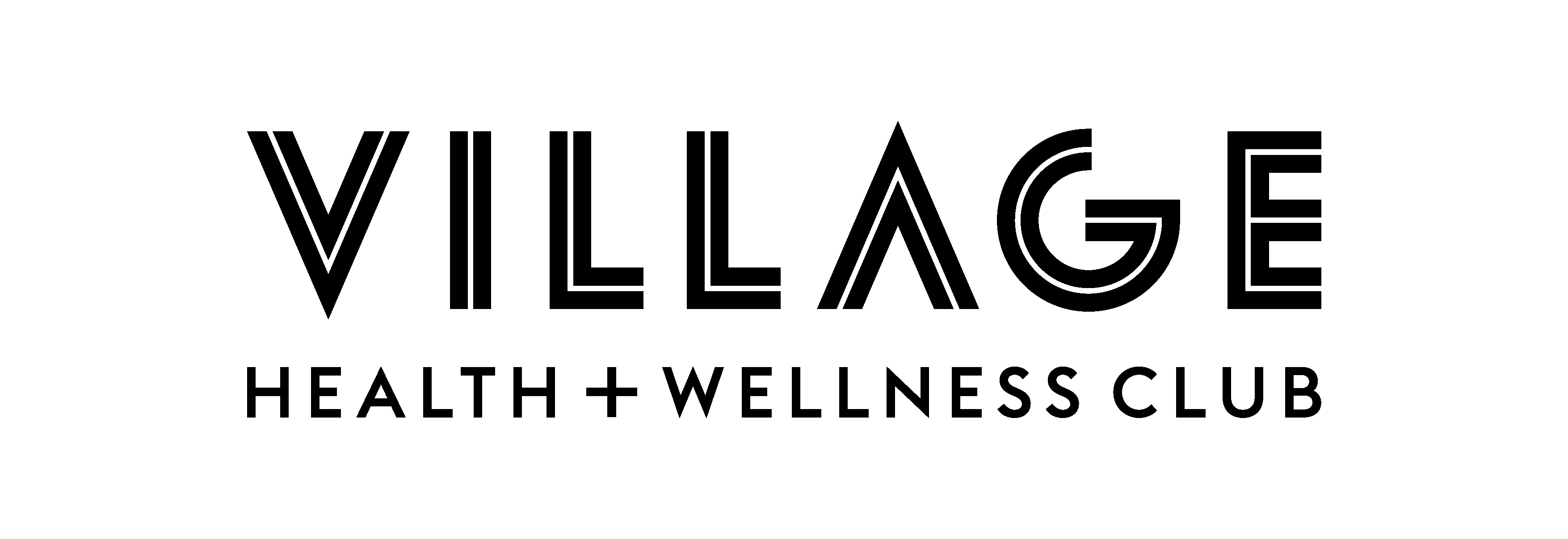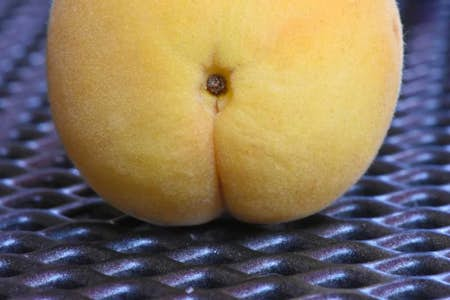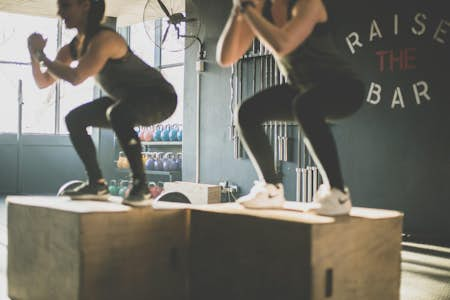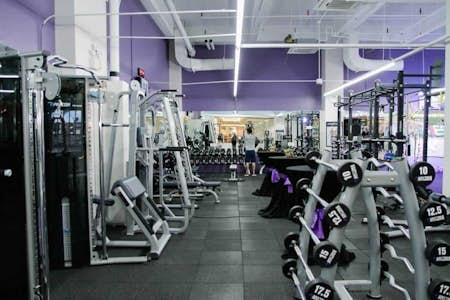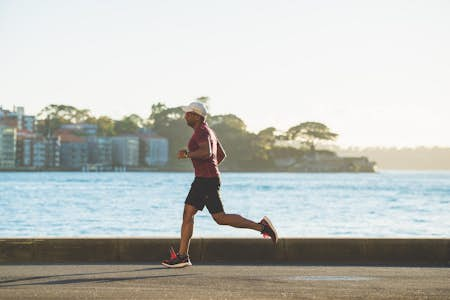Belly fat - for some it might seem like a minor inconvenience, but for anyone, it can pose a serious health risk.
A bigger belly might be seen as the price we pay for reaching our 50s - but it doesn’t have to be that way!
Both men and women can suffer from an increase in belly fat as they get older.
For women, increasing fat around the abdomen is linked to menopause. Lower estrogen levels after menopause can trigger an increase in body fat, particularly around the abdomen.
Ready to transform your life? Whether you're looking for a new pair of running shoes or some shiny home gym equipment, you can find everything you need to fuel your fitness journey with our partner brands.
Men don’t tend to have as much subcutaneous fat as women - the kind of fat stored under the skin - so they instead deposit a larger proportion of fat in the belly area.
Our abdominal muscles also weaken as we get older - Healthline states that our muscle mass and strength reduces by some 1.5% to 5% a year once we hit 50.
With weaker muscles around the abdomen, the body has little choice but to let go of any fat you’re holding in!
But if you thought belly fat was merely a cosmetic problem then I’m afraid that you’d be mistaken.
Belly fat and cardiovascular disease
The problem is, belly fat is uncomfortably close to our major organs.
Unlike fat build up on the thighs or buttocks, the proximity of belly fat to our heart, livers, kidneys and other organs makes it a greater issue than fat in other parts of the body.
That isn’t to say that fat in other parts of the body is healthy or safe, but that belly fat is a more severe indicator of health risk.
What’s more, is that belly fat can pose a risk to health even when we’re otherwise normal weight.
What does the evidence say?
Research overviewed by the British Heart Foundation found that those with an otherwise healthy weight would still be at 87% greater risk of cardiovascular disease if they had excess belly fat.
Mayoclinic similarly cites that belly fat specifically has been linked to a heightened risk of diabetes, high blood pressure and cardiovascular disease.
Healthline has also reviewed studies that show how belly fat specifically is linked to increased risk of heart attacks in both men and women.
In an article by WebMD, Dr. Paul Poirier, from the Institute of Cardiology at Laval University in Quebec, Canada simply states "Belly fat is bad fat.”
In summary, belly fat is not just a cosmetic issue.
But, on the bright side, losing belly is not the mission impossible that so many seem to think!
How big should my belly be?
So what is a ’big belly’ medically speaking?
It’s tough to put a ballpark figure on it and it really depends on how tall you are, your build and other factors.
- As a rule of thumb, the max waist size for men is 37 inches (94cm) or under.
- For women, the measurement is 31.5 inches (80cm) or under.
Even if your BMI is otherwise ’healthy’, if your waist exceeds these measurements, you’re at greater risk of cardiovascular disease.
Losing belly fat: An over-50s guide
Let’s talk about how to burn that belly fat, and how to keep that weight off.
Yes, belly fat is bad fat, but by taking action now, you can lose it and cut your risk of cardiovascular disease in the process.
Without further ado, let’s find out how to lose belly fat for good.
Diets for burning belly fat
Diet - the word can make some cringe with fear, but don’t go anywhere yet!
The fact of the matter is, if you want to lose belly fat, then improving your diet will help get you there far, far quicker than exercise alone.
No matter if you’re 30, 50 or 70, diet and nutrition is your main weapon in the fight for weight loss.
As the old adage suggests, you are what you eat, and the truth is, if you’re reading this article then you already know some of what you need to do to change your diet for the better (I know I do as I’m writing it!)
Diets to lose belly fat are not about total calorie restriction, nor will you need to terminate all of your favourite foods to make rapid progress.
Diets for the over 50s
As we age, our dietary needs change.
Chiefly, our demand for calories lessens as our muscle mass decreases.
Lower muscle mass = reduced energy demand.
With less muscle to burn fat, you’ll need to reduce how much you eat as you grow older.
That’s not to say the over 50s are weak by default (Arnold Schwarzenegger, Silvester Stallone and Jean-Claude Van Damme would certainly disagree with that), but just that you have to think more carefully about how much energy you need.
Whilst you can use strength training to bolster your muscle when you hit 50 and above (more on that in a moment), reducing your calorie intake immediately will get the ball rolling.
1: Cut out the worst things you eat
Start with the unhealthiest things you eat. These might also happen to be the things you love to eat the most - but needs must!
For me, when I realised my waist size was pushing 38”, ’red Coke’ (full-fat Coke) and croissants for breakfast were the first two foods to go. Switching from red Coke to Pepsi Max instantly cut my daily sugar consumption by some 40%!
Full butter croissants with butter spread on them - they were tough to eradicate from my daily breakfast but doing so cut my daily fat intake by 50%, which is pretty incredible.
Cutting just two things from your diet can cut your daily calorie intake massively.
But what you replace those foods with is also crucially important.
2: Swap for the right foods
Cutting out very unhealthy foods is a great start. But what can you replace them with?
Some ’healthy’ alternatives are not actually healthy at all. One excellent example here is granola, which is commonly seen as a healthy breakfast cereal.
Some brands of raw unsweetened and plain granola are fine, but granola features in Health’s Worthless Foods a Nutritionist Will Immediately Cut From Your Diet.
Check the labels of everything you buy, tot up the values and make sure you’re really cutting your calorie intake instead of just swapping foods around.
Cutting out the morning croissants for an XL bowl of Crunchy Nut granola is not a good idea!
3: Lower meat intake and eat more raw or plant-based foods
Meat intake is associated with weight gain as well as higher cholesterol and other health risks.
If you love to eat meat then you don’t need to go vegetarian to lower your belly fat but switching from red meat (like beef) to white meat (like poultry and fish) can help you lose weight and become fitter.
This study published in the BMJ specifically found that people who switched red meat to white would cut their risk of several types of disease.
In addition to switching to white meat, you can cut belly fat by increasing your intake of plant-based foods like fruit and veg as well as raw foods like whole grains.
All leafy greens, legumes, beans and cruciferous vegetables like broccoli and kale can help burn fat, and they’re full of vitamins, minerals and fibre.
4: Eat at the right times
Eating late at night is what sumo wrestlers do to put massive weight on their stomachs and legs.
Nutrition pioneer Adele Davis once gave the world-renowned advice to “eat breakfast like a king, lunch like a prince and dinner like a pauper.” But does this really matter?
Many studies do suggest that timing matters when it comes to eating, but actually, it’s more the foods we tend to eat at night that cause weight gain rather than the time of day (or night).
That late-night trip to the fridge probably isn’t for an apple, it’s for a bag of crisps. Rummaging around the freezer at 1 am on a Friday isn’t likely to yield a snack of tasty garden peas, but ice cream. It’s these sorts of choices that you can cut out with a 7 pm curfew on eating.
Exercise for burning belly fat
Now, we’ve talked about diet, let’s talk about what exercises you can do to burn belly fat.
Exercise does become a little more complicated as we age, but as so many super-fit over 50s, 60s, 70s and even those aged 80 or 90+ prove (like the marvellous Ed Whitlock who ran a marathon in under 4 hours at the age of 85), age is just a number.
Of course, you won’t need to run a marathon to lose belly fat, but what do all these fit over 50s have in common? They don’t have belly fat.
We spoke to Chloe Bircher from CB Fitness and Pilates, who told Health Times: "All movement is good as long as it doesn’t cause pain. Movement is medicine and movement can heal. Start small by increasing your steps, take the stairs not the elevator, and look into joining a fitness class. Remember everyone has to start somewhere. Give yourself the time and grace to achieve your goals."
Exercise for the over 50s
Your body is still pretty strong at 50 and for most exercise purposes, you’re still not classed as an ’older adult’ until you’re 65.
Now more than ever, there’ll be over-50s that scoff at the thought of being less able than they were when they were even 30, and that’s great.
The NHS’s guidelines on exercise do not change in regards to how long you should exercise for as either an adult or an older adult - both are recommended to do 150 minutes of moderate exercise or 75 minutes of vigorous exercise.
Evidence strongly suggests that continuing to exercise appropriately well into your older age reduces your risk of a multitude of health problems and diseases.
1: Focus on the exercise you enjoy
If you really hate the gym and you’ve tried and tried to get used to it then don’t stress - it’s simply not for everyone.
The best thing to do is spend some time considering what types of exercise you actually enjoy, and then focus on those.
It might be as simple as walking in the great outdoors, or you might enjoy sitting on an exercise bike running on a treadmill whilst catching up with TV.
Gardening is an excellent form of light exercise and one which we can always rely on going into our older age.
When it comes to vigorous exercise, you might need to think a little harder, though.
From Zumba to Jazzercise, swimming to climbing HIIT training, there are many forms of more vigorous exercise that you can try. It doesn’t matter what it is, so long as it gets your heart rate up and your muscles pumped!
2: Incorporate weight training
Weight training involves lifting and moving weights, it’s a form of anaerobic exercise rather than aerobic exercise, or cardio.
Weight training is definitely something we need to be careful with as we age, but by taking it easy at first and building your way towards heavier weights, you can effectively combat the muscle wastage that comes with age.
Exercises that target the abdominal muscles will help strengthen your core, which will certainly help tighten your stomach.
3: Move around more
Exercise doesn’t have to be conducted on a session-by-session basis. Simply moving around the house will help you rack up more burnt calories.
How do you get rid of belly fat after 50?
Getting rid of belly fat is essential if you feel your waist is bigger than it should be.
Cutting your waist size will lower your risk of a plethora of diseases - it’s as simple as that!
By improving your diet and exercising with an increased emphasis on strength training, you can crush belly fat and move on towards a much healthier middle and older age.
If you’re experiencing pain or exhibiting other symptoms during or after exercise, you should stop what you’re doing and seek medical attention.
With Scan.com, you can take action quickly and put your mind at ease.
Choose from 10 scan types at over 250 clinics nationwide and get the answers you need so you can continue looking after your health.
Visit Scan.com now to learn how it works and book your scan.

